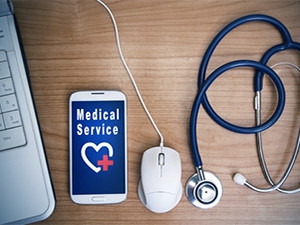
The first national online dashboard for CD4/viral load monitoring has been launched in SA, to help doctors and nurses keep a close eye on the health of HIV/Aids patients and reduce fatalities caused by illnesses linked to the epidemic.
The dashboard was launched in Johannesburg by Right to Care in collaboration with the Department of Health, the National Health Laboratory Service (NHLS), the National Institute of Communicable Diseases and Boston University.
CD4 cells are a type of white blood cell that play an important role in the immune system, and are also known as T-cells. Viral load is the best predictor of an HIV-positive patient's response to treatment. The dashboard will be used to improve the follow-up care of patients with high viral loads.
The ultimate goal of the dashboard is to reach the Joint United Nations Programme on HIV and Aids 90: 90: 90 target set for 2020, which says 90% of people infected with HIV should be diagnosed, 90% should be on treatment and 90% should have their viral load suppressed.
South Africa only has 36 months to reach the target, and it is expected this initiative will be rolled out to all nine provinces between January and March 2017.
It is estimated there are nearly 6.75 million people infected with HIV in SA, with 3.3 million on treatment. Of those who have undergone viral load testing, over 80% are viral load suppressed.
National Department of Health director-general Dr Yogan Pillay told SAnews the dashboard data will be communicated monthly and quarterly to all provinces and districts through 4 000 health facilities in the country that are providing services to patients.
The dashboard displays and analyses data in a way that healthcare professionals involved in managing the epidemic can easily engage with. It provides information at a national, provincial, district and individual level.
Pillay says although the programme will be used by health practitioners, patients will feel the benefits as their quality of life will improve as a result. He says while the number of people accessing treatment increases, there is a concern that the number of those defaulting will also increase.
"Two things happen when patients default treatment. One, they get sick... we think they are taking medication but they are not. The second thing is that they can transmit the virus. That is why viral suppression is good for the patient, and good for the community they are living in," explains Pillay.
He says early access to treatment is good, as it helps to suppress viral load.
Dr Sergio Carmona, a pathologist at the NHLS, says the data will also help to identify hotspots in the country where attention needs to be given.
"The better we understand how patients are being managed, the better control we have of the epidemic. It will also help to swiftly allocate resources where needed, such as infrastructure, nurses and doctors, monitor hotspots and expedite the right responses, as well as evaluate the effectiveness of interventions to contain the epidemic," Carmona says.
Share